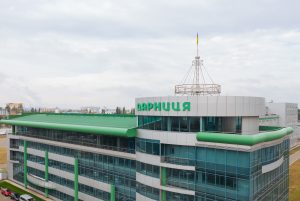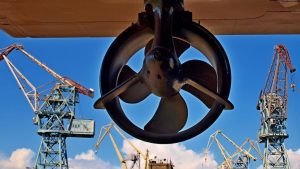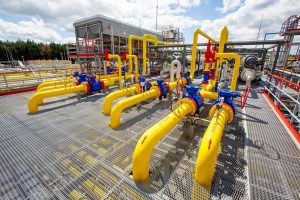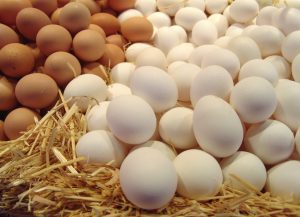
Darnitsa pharmaceutical company has suspended a project for the production of hydroxychloroquine for the treatment of COVID-19.
Аccording to the press service of the company, the company came to such a decision by tracking reputable medical studies regarding the effectiveness of hydroxychloroquine in the treatment of COVID-19. In particular, as of May 26, some 201 studies of the use of hydroxychloroquine for the treatment of COVID-19 were recorded, of which five were completed.
The company notes that the published clinical trial materials have not confirmed the benefits of using the experimental drug ‘hydroxychloroquine’ for patients with COVID-19.
“The safety of patients and scientific feasibility is an absolute priority for the company. Therefore, taking into account the world scientific thought, the company suspended the project for the production of hydroxychloroquine for the treatment of COVID-19,” Darnitsa said.
The company reminds that Darnitsa had launched the project to prepare for the production of hydroxychloroquine in March 2020, when Chinese treatment protocols and publications in authoritative sources about the effectiveness of this drug for the treatment of COVID-19 appeared. These data gave reason to include hydroxychloroquine in the protocols of experimental treatment of COVID-19 in many countries of the world, in particular in Ukraine, the United States and in European countries.
“At the same time, Darnitsa received numerous requests from Ukrainian doctors and patients asking for the opportunity to use the drug for treating coronavirus infection, since this therapy was considered by the medical community as potentially effective. Considering the scientific data and the medical community’s requests, Darnitsa started a project for the production of hydroxychloroquine preparations exclusively for the needs of medical institutions in the treatment of COVID-19,” the company’s press service said.
Darnitsa pharmaceutical company was founded in 1930. It is one of the ten largest pharmaceutical manufacturers in Ukraine and the top ten largest hospital suppliers. The strategic directions of the portfolio development are cardiology, neurology and solutions to pain problems.

Smart Maritime Group (SMG) of Smart-Holding, combining Kherson and Mykolaiv shipyards, earlier planned in 2020 to increase revenue from sales of products by about 20% compared to 2019, to UAH 600 million from more than UAH 500 million, however, due to the deterioration of the situation production volumes may decrease.
According to Dmytro Krasnikov, the CEO of Smart Maritime Group, the key task was to develop an updated business development strategy in two main areas: maintaining and developing the company’s main profile – shipbuilding and ship repairs, as well as diversification of activities involving all the existing potential of our shipyards.
According to him, the company has expertise in the manufacture of large metal structures, its specialized unit previously participated in a number of projects for the development of road infrastructure in Ukraine, was involved in the manufacture of equipment for mining and processing plants. This is one of the promising areas. The development of the strategy is at the final stage, in the near future it will be submitted for approval to the management company Smart-Holding.
The company strengthens the team, expects the arrival of several top managers in sales and human resources.
Concerning the influence of coronavirus on the company’s work, its head pointed to a decrease in economic activity, there is a lack of liquidity in the market, many clients do not have funds to finance repairs and work. The volume of orders is declining, many contractors, especially from Europe, took a break. General uncertainty leads to the fact that investment projects are frozen.
Given this, SMG adopted a cost-cutting program if the situation drags on for a long time, although it is forecasted that by the third quarter the economic activity of all entities, including the company’s customers, will begin to recover.

DTEK Oil & Gas LLC, which is responsible for the oil and gas business in the structure of DTEK energy holding, in May 2020 reached a record daily level of natural gas production both for the company and private companies in the amount of 5 million cubic meters (mcm), the company said in a press release.
“In May, DTEK Oil&Gas reached the daily natural gas production level of 5 million cubic meters. This figure was achieved for the first time in the history of the company and the entire private gas production of Ukraine,” the report said.
The daily maximum update was achieved through the implementation of infrastructure projects, a deep drilling program with the commissioning of new high-yield wells at Semirenkivske and Machukhske fields, as well as through measures to stimulate wells in the existing fund, the press release said.
“Despite the unstable economic situation in the country and the difficult conditions in the gas production sector due to record low gas prices, we are working hard to implement a strategy to increase natural gas production,” DTEK Oil & Gas CEO Ihor Schurov said.
As reported, in 2019 the company increased natural gas production by 0.66%, to 1.66 billion cubic meters.
DTEK Oil & Gas is an operating company responsible for the oil and gas sector in the structure of DTEK Group.
DTEK, GAS, OIL&GAS, PRODUCTION, RECORD

The metallurgical enterprises of Ukraine in 2020, according to the updated forecast, will reduce steel production by 4.1%, to 20 million tonnes compared to actual production in 2019 in the amount of 20.848 million tonnes, and by 7% compared to the original forecast, when steelmaking in the country was predicted this year in the amount of 21.5 million tonnes.
According to the updated balance sheet for the formation and consumption of scrap metal in Ukraine for 2020, published by the Ukrainian Association of Secondary Metals (UAVtormet), 2.7 million tonnes of scrap metal will be required to produce 20 million tonnes of steel at Ukrainian metal enterprises (a decrease of 10.3% compared to 2019, when 3.011 million tonnes of imported scrap metal was delivered).
In addition, it is forecasted that export of scrap metal from Ukraine this year will amount to 50,000 tonnes, while in 2019 it amounted to 40,900 tonnes (an increase of 22.2%). At the same time, scrap import in 2020 will also amount to 50,000 tonnes.
At the same time, according to the balance sheet, scrap metal procurement in 2020 should decrease by 18.2% compared to 2019, to 2.750 million tonnes.
It is also stated that in January-April 2020, Ukraine reduced steel production by 9.5% compared to the same period last year, to 6.731 million tonnes. During this period, 901,100 tonnes of scrap metal was delivered to the country’s metal enterprises (a decrease of 8.7% compared to the four months of 2019). Exports of scrap metal from Ukraine in the four months decreased by 59.1%, to 11,600 tonnes, imports by 74.6%, to 5,700 tonnes. Scrap metal procurement for this period fell by 10.2%, to 958,300 tonnes.

Gallusman, one of Ovostar Union companies, plans to begin the construction of an egg production complex in Latvia in partnership with the energy company ADVEN in 2021, the project is currently at the stage of assessing potential environmental impacts. According to Ovostar, it is expected that the new production complex will export up to 90% of its products. Another Latvian subsidiary of Ovostar, Ovostar Europe, which since 2015 has been cooperating with the group’s trading partners in the EU countries, will be engaged in export sales. The goal of Ovostar is to enter new markets in Europe and the Middle East.
“Today, the project is at the stage of assessing the potential impact of the new production on the environment. The examination should be completed before the end of this year, and the start of construction work is scheduled for 2021,” the company noted.
It is projected to bring about EUR 100 million investment and 200 new jobs to the Latvian economy.
Ovostar reported that Gallusman and ADVEN had already signed a letter of intent. The partnership of the companies is aimed at finding the best energy and infrastructure solutions for the egg production complex to achieve non-waste production.
“Upon completion of the project, Gallusman will become a leader in the poultry industry and animal feed trade in Latvia, as well as the largest producer of eggs and egg products in Northern Europe,” Ovostar said.
Gallusman is part of the Ovostar Union group. Ovostar Union, one of the leading Ukrainian agricultural holdings, is one of the largest egg producers in Europe. The business model of the company is built on the principle of a full production cycle.
BUILD, EGG, LATVIA, OVOSTAR, PRODUCTION

Private joint-stock company Farmak (Kyiv), the pharmaceutical company, did not halt production and will gradually exit lockdown, the press service of the company has told Interfax-Ukraine.
“Farmak continues production as usual. All lines are working as planned. However, after lockdown was announced all over the country on March 12 and the Health Ministry recommended that enterprises transfer employees to remote work, if possible, Farmak transferred some employees to remote work,” the company said.
According to the company, in particular, within the framework of lockdown restrictions introduced in the country, the sanitary regime was tightened to provide additional protection for workers, members of their families and to prevent the spread of coronavirus disease COVID-10, and a reserve of disinfection and personal protective equipment was created.
The company also developed an algorithm of actions and escort routes for people with signs of ARVI, limited mass meetings, replacing them with remote meetings, suspended business trips of employees abroad, and limited business trips within Ukraine.
Workers who returned from abroad starting March 16, switched to telework for 14 days,” the company said.
During lockdown, to ensure uninterrupted operation, Farmak developed routes and a schedule for centralized transportation of employees from their places of residence at 5.45 a.m., and a carsharing group was created to deliver employees to the office.
The press service of Farmak noted an increased demand for medicines manufactured by the company.
“Production is responding to increased demand. Our mission is to make affordable and effective medicines available for treatment, so we quickly adapt to changing market needs. For example, Farmak produces medicines (Amizon, Nazoferon, Gropivirin, Pelorsin) that can be used to treat and prevent influenza and ARVI,” the company said.